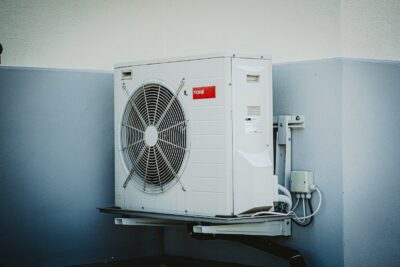Enhancing Operational Efficiency through Real-Time Data
Smart energy management systems (SEMS) are transforming the way airports operate, offering a powerful solution to reduce energy consumption, optimize resource utilization, and minimize environmental impact. As global concerns about sustainability intensify, these innovative systems are becoming increasingly crucial for the aviation industry.
One of the primary advantages of SEMS in airports is their ability to collect and analyze real-time data on energy consumption. By monitoring various systems, such as lighting, heating, ventilation, and air conditioning (HVAC), SEMS can identify inefficiencies and optimize energy usage accordingly. This not only reduces operational costs but also contributes to a more sustainable airport environment.
Predictive Analytics for Proactive Energy Management
In addition to real-time monitoring, SEMS leverage predictive analytics to anticipate energy demands and adjust systems proactively. This ensures that energy is used most efficiently, minimizing waste and maximizing savings. For instance, SEMS can forecast passenger traffic patterns and adjust lighting and HVAC settings in terminals accordingly.
Integration of Renewable Energy Sources
SEMS are designed to seamlessly integrate with renewable energy sources, such as solar panels and wind turbines. This allows airports to harness clean energy, reducing their reliance on fossil fuels and decreasing carbon emissions. By incorporating renewable energy into their energy mix, airports can significantly improve their sustainability profile.
Optimizing Energy Storage and Distribution
Efficient energy storage and distribution are essential components of SEMS. These systems can store excess energy generated from renewable sources during periods of low demand and release it when needed. This not only ensures a consistent energy supply but also maximizes the utilization of renewable energy, further reducing the airport’s carbon footprint.
Smart Lighting Solutions for Energy Savings
Lighting is a significant energy consumer in airport facilities. SEMS incorporate smart lighting solutions that adjust lighting levels based on occupancy, natural light availability, and time of day. This intelligent approach to lighting not only enhances passenger comfort but also significantly reduces energy consumption.
Case Study: Dubai International Airport’s Smart Lighting System
Dubai International Airport, a global aviation hub, has implemented a state-of-the-art smart lighting system as part of its SEMS. This system utilizes motion sensors, daylight harvesting, and dimming controls to optimize lighting usage throughout the airport. The result is a substantial reduction in energy consumption and a more sustainable airport environment.
The Future of Airport Sustainability with SEMS
Smart energy management systems are not just a trend but a necessity for the future of airport sustainability. As the aviation industry continues to grow, the environmental impact of airports must be addressed. SEMS offer a comprehensive solution, enabling airports to reduce energy consumption, optimize resource utilization, and transition towards a more sustainable future.
Embracing Technological Advancements
The future of SEMS lies in embracing technological advancements, such as artificial intelligence (AI) and machine learning. These technologies can further enhance the capabilities of SEMS, enabling more precise energy forecasting, predictive maintenance, and automated optimization. By staying at the forefront of innovation, airports can ensure their SEMS remain effective in the long term.
Collaboration and Knowledge Sharing
Collaboration among airports and industry stakeholders is crucial for the continued development and implementation of SEMS. By sharing best practices, data, and experiences, the aviation industry can collectively accelerate the adoption of smart energy solutions and achieve a more sustainable future for airports worldwide.
Cost Savings and Return on Investment (ROI)
While the environmental benefits of SEMS are undeniable, their financial advantages are equally compelling. By optimizing energy usage and reducing waste, airports can achieve substantial cost savings on their energy bills. Additionally, SEMS often qualify for government incentives and rebates, further enhancing their ROI. Over time, the cumulative savings can significantly offset the initial investment in SEMS, making them a financially sound choice for airports.
Enhancing Passenger Experience
SEMS not only contribute to airport sustainability but also enhance the overall passenger experience. Smart lighting systems create a more comfortable and welcoming atmosphere in terminals, while optimized HVAC systems ensure a pleasant temperature throughout the airport. Additionally, the integration of renewable energy sources aligns with the growing demand for sustainable travel options, further enhancing the airport’s reputation and appeal to environmentally conscious passengers.
A Global Movement Towards Sustainable Airports
The adoption of SEMS is not limited to a few airports; it is a global movement gaining momentum. Airports worldwide are recognizing the importance of sustainability and taking proactive steps to reduce their environmental footprint. SEMS are at the forefront of this movement, offering a proven and effective solution to achieve energy efficiency, resource optimization, and a greener future for aviation.
#SmartEnergyManagementSystems #AirportSustainability #EnergyEfficiency #ResourceOptimization #EnvironmentalImpact























